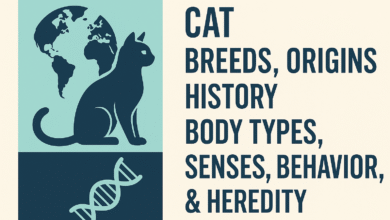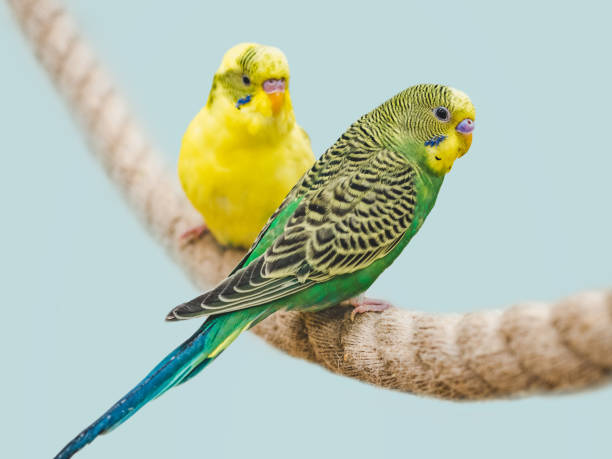
Content include in it
SCIENTIFIC CLASSIFICATION
CLASSIFICATION AND THE ORDER PSITTACIFORMES AND ITS
RELATIONSHIPS WITHIN THE CLASS
AMAZON PARROT
THE EVOLUTIONARY ORIGIN OF
PSITTACIFORMES
GENERAL CHARACTERISTICS
QUALITIES OF PARRORT
ECNOMICAL IMPORTANCE
The general scientific classification for parrots as a group is
Order Psittaciformes
This order includes about 400 species of parrots worldwide, divided into three main families
Psittacidae – True parrots (e.g., macaws, African greys, Amazon parrots)
Cacatuidae – Cockatoos
Strigopidae – New Zealand parrots (e.g., the kakapo and kea)
There is no single scientific name for all parrots because it’s a diverse group, but the most broadly used taxonomic name
THE ORDER PSITTACIFORMES AND ITS
RELATIONSHIPS WITHIN THE CLASS
AVES
The roughly 350 species in about 74 genera of parrots and cockatoos (Forshaw 1989; Collar 1997; Rowley 1997; Juniper & Parr 1998) are grouped within the Psittaciformes, one of the most distinctive and largest of the 28 avian orders (Brooke & Birkhead 1991). Parrot and cockatoo species are usually easily recognized as psittaciform (or “psittacine”) birds because of their curved beaks, in which the tip of the maxilla projects beyond the shorter mandible, and their zygodactylous feet, in which the second and third toes point forward and oppose the first and fourth toes, which point caudally. Other characteristics include a usually colorful plumage; a very large brain; curiosity, lifelong capacity for learning, and adaptability to changing environmental conditions; distinctive vocalizations; a feeding ecology as seed predators; versatile feeding mechanisms; a complex social behavior; lifelong pair bonding nesting in cavities; white eggshells.
Amazon parrot
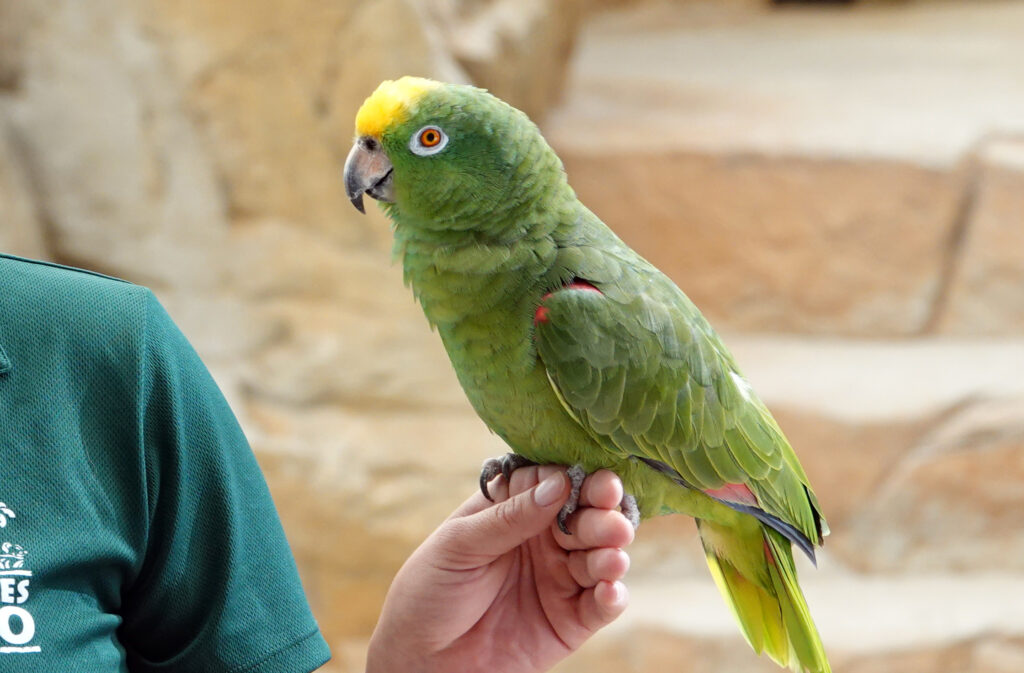
Amazon Parrots Overview
Scientific Classification
- Common Name: Amazon parrot
- Scientific Genus: Amazona
- Family: Psittacidae
- Order: Psittaciformes
There are about 30 species within the Amazona genus, including:
- Yellow-naped Amazon (Amazona auropalliata)
- Blue-fronted Amazon (Amazona aestiva)
- Orange-winged Amazon (Amazona amazonica)
- Double Yellow-headed Amazon (Amazona oratrix)
History and Origin
- Native Range: Central and South America, the Caribbean
- Habitats: Tropical and subtropical forests, woodlands, savannas
Cultural and Historical Relevance
- Amazon parrots have been admired for centuries by indigenous peoples in the Americas.
- Their vibrant plumage and ability to mimic human speech made them popular companions as early as the pre-Columbian era.
- European explorers brought them to Europe during the Age of Exploration (15th–17th centuries), where they quickly became status symbols among the elite.
Key Characteristics
🧠 Intelligence
- Highly intelligent birds, capable of solving puzzles and mimicking human language and sounds.
- Some species (like the Yellow-naped Amazon) are among the best talkers of all parrot species.
🗣️ Vocal Abilities
- Can develop a vocabulary of dozens to hundreds of words.
- Often mimic tone, inflection, and even household sounds like doorbells or phones.
Physical Appearance
- Size: Medium to large (10–18 inches long)
- Coloration: Predominantly green feathers with distinct colorful markings on the head, wings, or tail depending on species.
- Example: Blue-fronted Amazon has a blue patch on the forehead.
- Lifespan: 40–60 years in captivity, sometimes longer
Personality
- Social, affectionate, and enjoy attention.
- Can become strongly bonded with their human caregivers.
- Known for being playful, curious, but sometimes moody or territorial.
Challenges in Captivity
- Require daily mental stimulation and social interaction.
- Without enough attention, they can develop behavioral issues like screaming, feather plucking, or aggression.
- Need a large cage and time outside it for exercise.
Conservation Status
- Some species are endangered due to:
- Habitat loss
- Illegal pet trade
- Examples:
- Yellow-headed Amazon (A. oratrix): Critically Endangered
- Puerto Rican Amazon (Amazona vittata): One of the rarest parrots, with major conservation efforts underway
✅ Summary
| Feature | Description |
|---|---|
| Native Range | Central/South America, Caribbean |
| Intelligence | Very high; can mimic speech |
| Lifespan | 40–60+ years |
| Personality | Social, playful, can be demanding |
| Conservation | Some species are threatened or endangered |
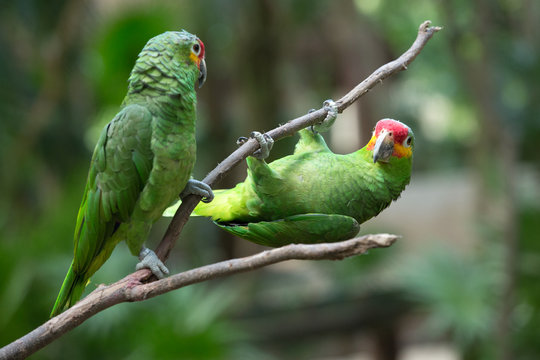
THE EVOLUTIONARY ORIGIN OF
PSITTACIFORMES
The evolutionary origin of the Psittaciformes can be reconstructed from a combination of functional morphological, ecological, phylogenetic, biogeographical, geological, and paleoecological data (Cracraft 2001; Homberger 1991, 2003). The zygodactylous feet that are especially adept at climbing tree trunks and the predominant nesting in tree cavities suggest that the Psittaciformes originated as forest birds. The white color of the eggshells indicates that the ancestral species incubated their eggs in cavities (probably of trees) where they would not need camouflaging colour pattern to escape the attention of predators.
The functional morphology of their feeding apparatus provides additional support for a psittaciform origin from an ancestor that was adapted to living in forests (Homberger 2003).
The quadratomandibular, or jaw, joint is uniquely shaped to allow lateral movements of the lower mandible relative to the upper maxilla. However, parrots and most cockatoos, such as the White and Pink Cockatoos (Cacatua spp., Eolophus roseicapillus, Lophochroa leadbeateri, Plictolophus spp.), the Cockatiel (Nymphicus hollandicus), the Yellow-tailed and White-tailed Black Cockatoos (Calyptorhynchus [Zanda]), and the Palm Cockatoo (Probosciger aterrimus), use this capacity only during bouts of bill honing and for minor adjustments when positioning food items between their mandible to bite into them. It is unlikely, therefore, that the psittaciform jaw articulation was evolved in conjunction with the bill movements observed in these species. It has long been suspected that it was a feature that originated in a psittaciform ancestor as part of a feeding behavior that differed from that which is common among extant parrots.
General features


Parrots vary in total length from 8 to 100 cm (3 to nearly 40 inches), the latter in long-tailed forms such as macaws. The short neck and sturdy body, along with the stout feet and thick bill, give them a bulky appearance. The broad wings are often pointed; the tail is highly variable in both length and shape. In some species the tail is short and rounded or square; in others, such as the macaws, it is extremely long and pointed. In numerous species the central tail features are very long, surpassing the body in total length. In the five species of racquet-tailed parrots (Prioniturus), the central tail feathers are longer than the others and are spatulate, the middle part of the feather shaft being bare. No parrot has a forked tail. Pointed wings and a long tail usually are found in species that fly great distances; rounded wings and blunt tails typify the more adept climbers. Most parrots are swift on the wing, although they generally fatigue quickly.
Qualities of parrot
The qualities of parrots, especially the ability of many species to imitate human sounds, make them popular as pets . The African grey parrot (Psittacus erithacus) and some species of amazons (Amazona) from the New World tropics are particularly good mimics. There is no evidence to suggest, however, that talking parrots realize what they are saying. Another appealing attribute of parrots is their display of affection, not only to others of their own species but also to humans. Pairs of many species, especially the lovebirds (Agapornis), are together almost constantly, nibbling each other’s feathers with seeming affection; if one bird disappears, its mate sometimes dies, apparently of loneliness. Many parrots seem to delight in being petted and scratched, which is rare among birds. Parrots have extremely powerful jaws.The use of toes for climbing and food handling, in much the same manner as humans use hands, also makes parrots appealing.
Colourful parrot
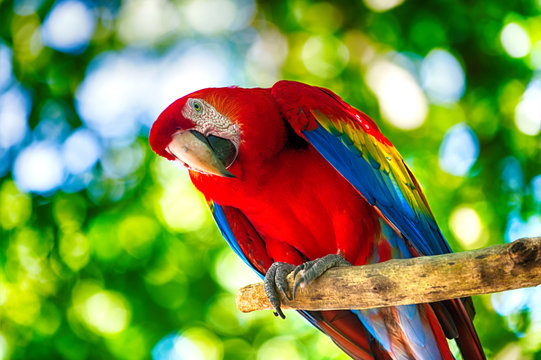
Their longevity, bright colours, intent gaze, ability to learn tricks, and willingness to remain on a perch instead of fluttering about contribute to the fondness people may feel for various kinds of parrots as pets. Finally, most species are vegetarians and thrive on a varied diet. This circumstance, as well as the fact that their droppings typically are dry and compact, means that parrots require little care.
Economic importance
The primary economic importance of parrots derives from their popularity with aviculturists. So popular are some species that at the close of the 20th century more than 90 species were threatened with extinction, and governments have found it necessary to pass laws forbidding export of the birds because wild populations are being depleted. Contributing to the problem is that, because of mistreatment en route, only a few of the many individuals captured ever reach the comparitive safety of a comfortable cage. Only a few parrots, especially certain of the Australian seed-eating species, damage crops and therefore are hunted and killed.




